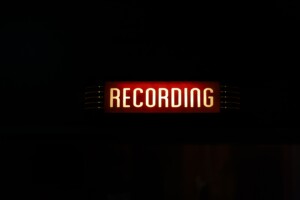There you are, reading over yet another audition, and you wonder to yourself, “How many takes will this take for me to actually win this job?” The answer is the same one that Paul Schmidt gave in his blog post in April 2021, “It depends.”
Spoiler alert: It still does.
I want to encourage you to read/listen to Paul’s blog, as he did an excellent job describing when, how, and why to give multiple takes. In this post, however, I thought I would narrow in on my process of how to provide a different “take” for each of your takes. As Paul mentions, it is critical to make sure each take is different, or you will be wasting everyone’s time, including your own.
Step One:
Do your script analysis. Do not skip this part even though you will be tempted to do so.
Step Two:

Record your first take.
I do not read the specs for my first stab. Instead, I simply record and deliver what I think I would want to hear if I listened to this script. A lot of time, this remains my first take, but not always.
Step Three:
Read the specs and deliver one you think the writer of this audition would want to hear. After this point, you potentially could have two solid takes, and all you have to do is decide which one is best, because – let’s be honest – they will probably only listen to your first one unless you get short-listed. If you are new to voice-over, you most likely will not have two usable takes at this point. You will then need to choose which one is your best and go to the next step.
Step Four:
After choosing one take/style you liked, do the same delivery you did the first time, only smile so big that you think your cheekbones may shatter and your lips may fall off – then deliver your take. Give it a lot of energy.
Step Five:
Using the same approach from Step Three, bring down the energy a bit. Pretend as if you just woke up in the middle of the night; you roll over and softly tell the person lying next to you something important. You don’t want to wake up anyone else in the house. You just have this one thing to say and go back to sleep. Note that this is not a whisper (though sometimes it can be), but a very natural, conversational delivery to whomever you imagine is there. Personally, I pretend I am talking to my wife, but you substitute in anyone you want, even your pet!
I use a lead-in line, something like, “Hey, if you can think of it, remind me to call my mom in the morning.” Those words get me to where I need to be emotionally for most deliveries of this nature. It would be best if you created your own – write it down if you need to. Say your made-up line by heart first, then go right into the lines of your audition copy. Listen back to it: you should now have your “pillow-talk” take. Are you keeping score? At this point, you potentially have four really good takes to choose from.
Step Six:
Pick two takes that show the most range, with the first one being the one you like the best, do your editing process that you usually do for auditions, and submit it.
Step Seven:
Forget it, and move on to the next audition!
Exceptions: Again, as Paul discussed: read the rules. If they ask for only one take, only give them one. If they can’t trust you to follow the submission rules, they won’t trust you in front of their clients. Also, If they ask for multiple takes, I would give them at least 3. If the audition only has 1-2 words, I usually send them four or more takes.
Is this the only way to come up with original takes? Absolutely not. I would encourage you to create your own paths to different sounding VO takes. Then write it down, and repeat it often. The more you do something, the quicker you can get it done without compromising quality. I hope this has helped you plan a “take attack” for your next set of auditions.
Check out our free PDF with pro-tips from real working voice-over actors here!
Want to learn more about voiceover? Signup for our introductory VO webinar.




